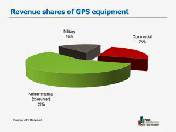
e fermented from Penicillium funiculosum is all the greater as raw materials are more expensive
A study based on the monthly optimization of a “broiler grower” formula proves the economical interest of NSP enzymes, whatever the context of raw material prices and the nutritional levels required.
NSP Enzymes are known to increase the digestibility of raw materials for monogastrics, such rapeseed meals, DDGS. ., offering an alternative to soybean meals when prices shoot up and thus allowing to offset higher feedstuff costs. A study led by Adisseo shows that the economic interest of NSP enzyme fermented from Penicillium funiculosum, the versatile enzyme, is all the greater as raw materials are more expensive, whatever the country and the availability of local ingredients.
The study is based on the monthly optimization of a “broiler grower” formula whose nutritioHal constraints and the raw materials offered are specific to the five countries surveyed: South Africa, Poland, Turkey, Tunisia and France. Starting from a monthly summary of the prices of raw materials, Pascal Thiery, Technical Manager for Africa and Middle East region, has optimized this set of formulas both using NSP enzyme fermented from Penicillium funiculosum then not using it in order to measure the consequences on the formulation and to calculate the return on investment (ROl).
This work first allows to assess the economic interest of NSP enzyme fermented from Penicillium funiculosum in formulas whose nutritional levels are different. For instance, some countries set energy levels over 3lOOKcal/kg of Apparent Metabolized Energy (Turkey, South Africa, Poland) while Tunisia only requires 295OKcalIkg. Likewise, the levels of proteins and amino acids cover a wide range of values going from I 8.5% to 22% of crude protein and from 1.07% to 1.30% of lysine.
Soybean meal prices have almost doubled during the period
Besides, the survey allowed to conclude with contexts of contrasted prices. Indeed, during the period examined, the price rise of soybean meal was considerable, shooting up in France from less than 300 €/ t at the end of 2011 to over 500 €/ t in July 2012. In Turkey, the price rocketed from 350 €/ t to 650 €/ t over one year.
Soya bringing about a general rise of the available raw materials, the formulation of feeds based on the initial criteria entailed a noticeable rise of the raw material cost, even when using locally available substitutes to soya. Thus, the raw material cost of the “broiler grower” formula rose from 360 €/t to over 450 €/ t in Turkey, and from 275 €/ t to 390 €/ t in France.
But whatever the country, the use of NSP enzyme fermented from Penicillium funiculosum allowed to cut the extra costs, thanks to the possibility of increasing the value of some raw materials: sunflower or rapeseed meals, DDGS, but also cereals as in Tunisia, where NSP enzyme fermented from Penicillium funiculosum has allowed to decrease the shadow price of barley compare to corn, and to introduce some barley in the feed leading to a sustainable and significant benefit.
For example, using NSP enzyme fermented from Penicillium funiculosum in a French formula and in the context price of august 2012 dropped the shadow price of barley of more than 50 € It, and allowed to increase its rate, with a final formula cost reduced by 16 €/ t.
More particularly, we notice that the economic interest of NSP enzyme fermented from Penicillium funiculosum is always established and it is all the greater as the context of raw material prices is higher. In France, the savings on material costs reached 20 €/ t in august 2012 when the price of soya reached a peak, against 10 €/ t November 2011. In Tunisia the savings went over 20 €/ t for a maximum formula price of 390 €/ t.
Figure 4: Saving with NSP enzyme fermented from Penicillium funiculosum from November 2011 to September 2012 (€/ t).
Considering that, if one follows Adisseo recommendations, the return on investment is 81/ on average during this period in the five countries surveyed and can even reach 201/ as was the case in the Tunisian context in August 2012.
Figure 5: Return On Investments in €/ € enzyme invested
Therefore, whatever the context of raw material prices and the nutritional level of the formulas, the return on investment of NSP enzyme fermented from Penicillium funiculosum is clearly demonstrated.



